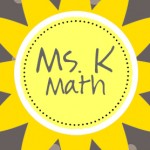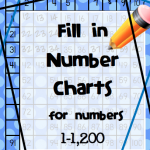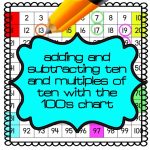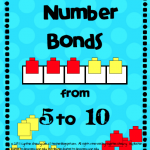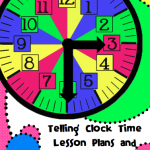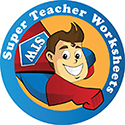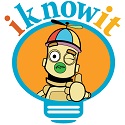Free Math Common Core Tasks
I just ordered these Battista books to help implement the common core math standards for each grade level at school. To my delight, the books list a link to extra free resource tasks! There is a book for place value, multiplication and division, fractions, geometric measurement, and addition and subtraction, hence there are FREE resources for all of these.
These free tasks are at Heinemann, the publisher’s website. To access the free resources, first click on the book icon of the topic you are interested in.
Next click on the link that says “companion resources”. This will take you to all of the free tasks for that particular math book.
Here is a sample of one of the tasks:
Wondering What the PARCC Assessment Will Look Like?
Now there is less to wonder about. Admittedly living in disequilibrium and uncertainty all year about how students will be tested in the future, I now see a glimmer of light at the end of the tunnel. I perused the PARCC assessment items that are up to view. There are now more questions up than there used to be, so now I have a better understanding of how students will be asked common core questions. Now I know how rigorous I need to be in my question asking of students. I suggest you take a look to if you are one of the PARCC states.
I noticed that students are doing a lot of writing about their mathematical thinking, so it looks like math journals will come in really handy. Also, students answer questions in which there could be more than one right answer or more than one way to arrive at the answer. They also seem to love fraction number line questions!
Here is the site. http://www.parcconline.org/samples/mathematics/grade-3-mathematics Click on the grade level you want to look at.
Then click below to access the tasks. Also take the time to read about the 3 different types of tasks.
Then click on Elementary School Tasks.
Another Great Common Core Resource with Free Tasks
I’ve just been searching to see if there are new PARCC assessment items out so that I could have a glimpse at the way we will be tested. I have checked periodically this year to see what the PARCC items will be like, but there was never much available to see. Well, while clicking on the tasks I was taken to another page which has lots of sample free common core tasks which are VERY similar to the PARCC assessment Here is the site: http://www.illustrativemathematics.org. Just click on the right sidebar where it says illustrations.
You will have to click along the bottom on the blue numbers to go to higher grades.
Fun and Easy Tool to Teach Number Sense for Kinesthetic Learners
Here is my absolute favorite session from NCTM (National Council of Teachers of Mathematics). The presenter was a lady from Canada who brought The Learning Carpet for us to see. The learning carpet is a 10 by 10 grid of empty squares that you can use for many things, but it is especially useful for a large 100’s chart.
The number cards are 6 1/2 inches square and made out of card stock. Students in groups of five can see how fast they can place the number cards on the carpet. This can be easily differentiated by giving the easier numbers to the struggling learners and the larger numbers to the students who need a challenge.
Students can also be asked to pick up the numbers whose digits makes sums of 10 or any number. Students will start to see patterns such as how different sums follow diagonals. I felt dumb when she showed us this because I had never noticed that the sums make diagonals.
In the above picture you can see the gray squares on the mat. You could easily make this on a tarp with paint or tape to show the number boxes. The gray boxes are 6 1/2 inches and the black stripes on the grid lines are 1/2 an inch. If I made one of these carpets, I would make the squares actually bigger so that feet could more easily fit inside the boxes. I ordered the book with all the games that you can play so I could make my own if I wanted. Next year, there may be money in the budget to actually purchase some of the carpets.
The amazing thing about the fact that there are no numbers on the grid actually teaches more number sense. Students are made to think about number relationships to find spaces on the grid. If asked to find any number on the blank grid students have to understand the relationships between the numbers. For example, if trying to find 57 on the grid, students will know that all the sevens are in a column so that 57 will be in the column with sevens. A marker can be thrown on the grid and then students have to tell what number space that it landed on. They can walk on the carpet to help them figure it out.
The grid can be used for bar graphs or coordinate grids. The grid can also be used for area and perimeter like below.
There are so many fun activities you can do with this carpet, and I love the idea of the students actually being able to get up and stand on it to be involved. If you want to order the resources you can buy learning carpets and resources here. The kindergarten teacher who designed these is in Canada, and this is the only place you can buy them. They don’t sell through a larger distributor like Amazon etc. I have no stock in these, I just think that it is a great idea whether you order the ones she makes or make your own.
Do You Need An April Bulletin Board Idea?
I was assigned the duty of doing one of our cafeteria bulletin boards this month, so with lots of thought I decided on the title “Right Answers Keep Falling on My Head”. This title came as a marriage of an April rain showers theme and a testing theme–the spring state testing is a huge deal at my school. I used a math font that creates testing bubbles so that I could put test bubbles inside the rain drops. I double spaced these and just cut the drops out free-handed. I used bulletin board paper to create the umbrella which I sketched out free-handed. Next I wanted to put the back of a little girls head on the bottom so the rain drops could actually be falling on a child’s head. We have a predominately African American student population, so I tried to mimic the cute, twisty ponytails that the girls wear. I took black yarn and wrapped it around a piece of circular cut cardboard for the girls head. To create the ponytails, I wrapped yarn around the top of a copy paper box. Then I tied it off so it would go around the circular cardboard. Next, I cut the ends of the huge yarn loop that I had wrapped around the box lid so that they would be loose to twist like braids. Finally, I braided/twisted the yarn to look like little twisty braids and finished them off with yellow bows. I hope this will spark an idea for you to use!
Try This Incentive to Encourage Students to Count to 100
The idea of belonging to a club makes kids feel like they belong. With that said, one of our kindergarten teachers came up with the idea of belonging to the “100 Club”. What does it take to belong to the 100 Club? Well, you guessed it…you must be able to count to 100! I took this idea a step further and suggested that we hang all of the kids pictures on the wall that were in the 100 club. We will add to this as the remaining students are able to count to 100. The kids have taken an extra interest in counting to 100 especially if their pictures aren’t on the wall! This display of the students’ pictures has grabbed students’ attention of course as well as parents and staff members. We even have a kindergartener that told her teacher, “I counted to 100 in my pillow 3 times last night before I went to bed.” 🙂
Has the Weather Put a Damper on Recess? Measure Instead…
One day the students had been inside for days, and not been allowed to play outside because it was so cold. Wanting the students to enjoy the slight snowfall we had just had, I called the office to let them know we were going outside to do some measurements. This was my way of giving the kids a little outdoor time! We measured the depth of the snow with rulers in both inches and centimeters.
We even calculated the temperature to see how cold it was…
Why can’t you take a little time out for fun and math with the weather?
Need a Fun Way to Introduce Area?
Kids love this! Find the area of the desktop in square units…or in this case in square sticky notes! Give students a sticky note pad and let them stick the notes all over the desk, leaving no spaces and without overlaps. Then have students count the number of sticky notes that it took to cover the desk. If there are some sticky notes hanging off, then you will be able to talk about the halves–or in the picture below thirds. Wow! A fraction lesson in the midst of an area lesson. Then students will be able to talk about how the halves fit together to make wholes or that 3 thirds makes a whole. Have students calculate the number of wholes plus their fractional amounts hanging off to find the total. This works as a lovely discussion of square units since the pieces that are counted are actually squares. One sticky note pad (of 100 sheets) will be enough to cover a large desk like the one shown below. If students have a smaller desk where the books slide in underneath the top, then half of a sticky note pad will be enough to cover one. If you prefer an alternate activity, try finding the area of a book with Cheeze-its, or Starburst candy squares–these unit squares don’t work well to discuss fractional pieces though.
Seize This Easy Opportunity for Students to Measure
I’m always trying to find ways to help kids learn math by osmosis :). I try to hang vocabulary words and other mathematical items in the hallway near the bathrooms to help kids learn while they are waiting in line. I even asked my principal a few years ago if I could hang a multiplication fact on the back of each bathroom stall door. I thought they could learn a fact while they were sitting there on the, you know, toilet :). My principal unfortunately didn’t like the idea. She thought the kids would write on them. This is one of those times when I wished I would have asked for forgiveness rather than permission! Now onto the easy measurement experience for kids.
The fun measurement activity started with my mom. (I must take a moment and tell how thoughtful my mom is! I love her! :)) I really appreciate how my mom supports my teaching and blogging efforts. She is always sending me items to use for school. This time she sent me this growth chart she had gotten from somewhere. I laminated and hung it up near the restrooms so that students could measure themselves in inches. After it had been hung up a while, I realized that many of the students in the 2nd-4th grade hallway were too tall for the chart so later on I hung up a measuring tape beside it which goes to 60 inches. The teachers in the hallway are always telling me that kids love to measure themselves. Many of them measure themselves from week to week to see if they have grown from one week to the next. I hung a sign above the measuring chart that asks students how tall they would be in feet and inches. Later on, I added the arrows that show how many feet every 12 inches are worth. That way a student will at least be a good estimator to five feet or 60 inches. Below are pictured the measuring tape and the sign that are hung outside the bathroom. I know you may be thinking that kids will waste time instead of coming back to class…but on the contrary the students that are measuring themselves are actually having a meaningful hands-on learning experience even if it does take an extra minute.
